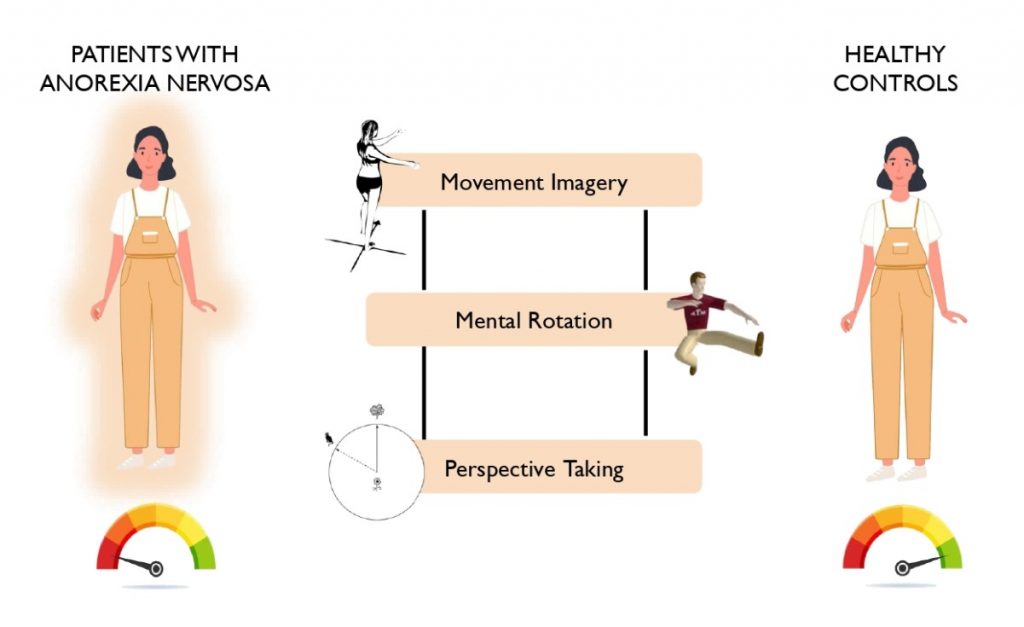

Recent evidence suggests that the body image disturbances often observed in patients with anorexia nervosa also extends to the body schema. According to the embodiment approach, the body schema is not only involved in motor execution, but also in tasks that only require a mental simulation of a movement such as motor imagery, mental rotation of bodies, and visuospatial perspective-taking. The aim of the present study was to assess the ability of patients with anorexia in mentally simulate movements.



The sample included 52 patients with acute anorexia and 62 healthy controls. All participants completed three tests of explicit motor imagery, a mental rotation test, and a test of visuospatial perspective-taking.
The results show that patients with anorexia nervosa, with respect to controls, reported greater difficulties in imagining movements according to a first-person perspective, lower accuracy in motor imagery, selective impairment in the mental rotation of human figures, and reduced ability in assuming a different egocentric visuospatial perspective. These results are indicative of a specific alteration in motor imagery in patients with anorexia nervosa. Interestingly, patients’ difficulties appear to be limited to those tasks which specifically rely on the body schema, since patients and controls performed similarly in the 3D objects mental rotation task.

Meregalli V, Tenconi E, Madan CR, Somà E, Meneguzzo P, Ceccato E, Zuanon S, Sala A, Favaro A, Collantoni E. Beyond body image: what body schema and motor imagery can tell us about the way patients with anorexia nervosa experience their body. Psychiatry Clin Neurosci. 2022 Nov 4. doi: 10.1111/pcn.13501. Epub ahead of print. PMID: 36330847.

